One of the main sights to see on my visit to Iran was to see the ancient ceremonial capital of the First Persian Empire, the great city of Persepolis. It's ruins are located in the Fars province of Iran about 60km from the city of Shiraz. UNESCO declared this city a World heritige site in 1979.
Join me for some experiences on a trip from from the UAE to Syria. There were highlights in each place that will stay with my forever. I am writing now many years later but I would like to share some of the memories that have stayed with me. Travel is so much fun, if you get the chance, get out and explore this great world.
Persepolis
Persepolis was the seat of government of the Achaemenid Empire but in practice was a ceremonial capital and residence for the kings, with the administrative capital being Susa in the West. It was however a spectacular showplace for receptions and festivals of the kings of ancient Persia in a time when its empire stretched from Greece and Libya in the west to India in the east. Darius the Great begun construction but he didn't live to see its completion. It was completed in his honour by his son Xerxes
Founded by Darius I in 518 B.C., Persepolis was the capital of the Achaemenid Empire. It was built on an immense half-artificial, half-natural terrace, where the king of kings created an impressive palace complex inspired by Mesopotamian models. The importance and quality of the monumental ruins make it a unique archaeological site
Source: www.unesco.org
Alexander the Great
Persepolis was sacked and burned by Alexander the Great in a night of drunken excess and following goading by one of his courtiers apparently in revenge for the burning of the Acropolis by the Persian ruler Xerxes. When Alexander arrived he found the Jewel of Ancient Persia. He sacked it and carried its riches from the treasury back to Greece on 3 thousand camels mules leaving only ashes behind.
The Apadana Palace
This was the main palace and mainly used for great receptions by the kings. Thirteen of its seventy-two columns still stand on the enormous platform to which two monumental stairways, on the north and on the east, give access.
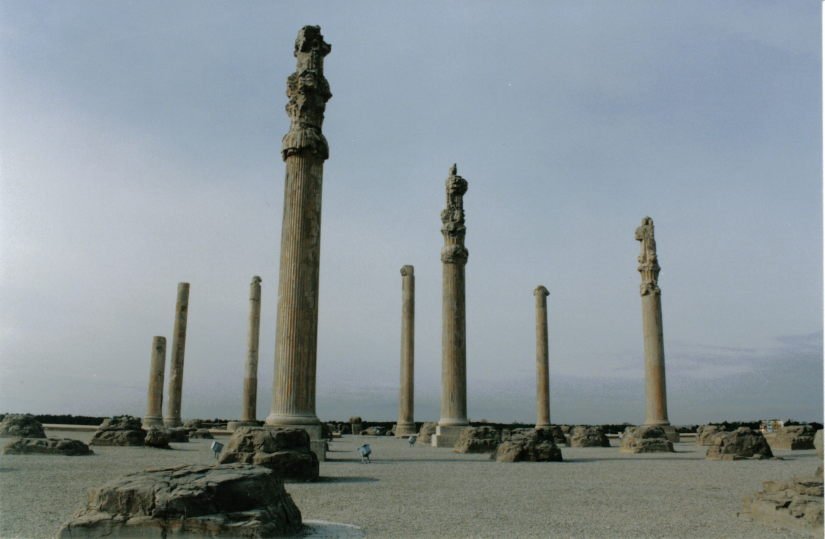
Originally the Apadana Palace had 72 magnificent columns
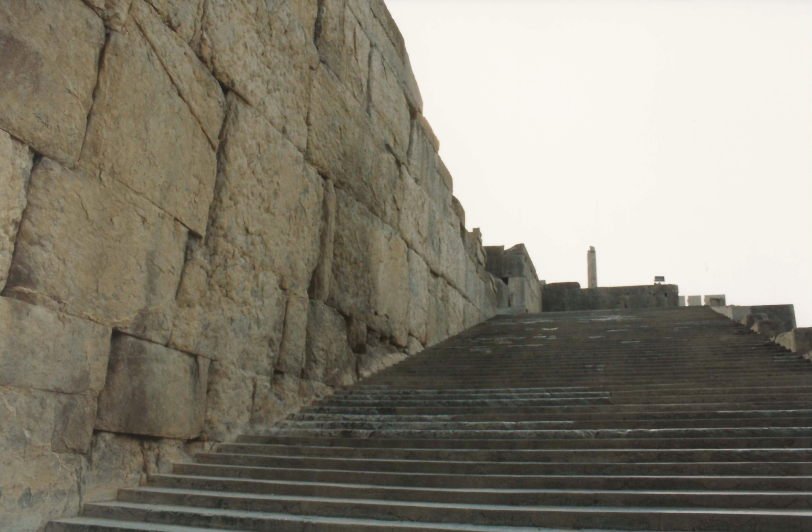
Grand Staircase of Persepolis, 110 Steps on each side leading to the Apadana
Inside the walls are adorned with rows of beautifully executed reliefs showing scenes from the New Year's festival and processions of representatives of twenty-three subject nations of the Achaemenid Empire, with court notables and Persians and Medes, followed by soldiers and guards, their horses, and royal chariots.
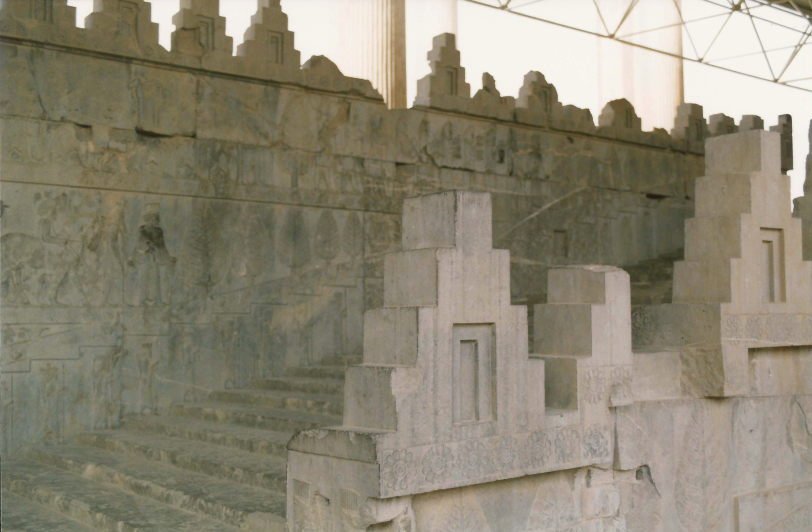
Reliefs depicting delegates carrying gifts as token of their loyalty and as tribute to the king.
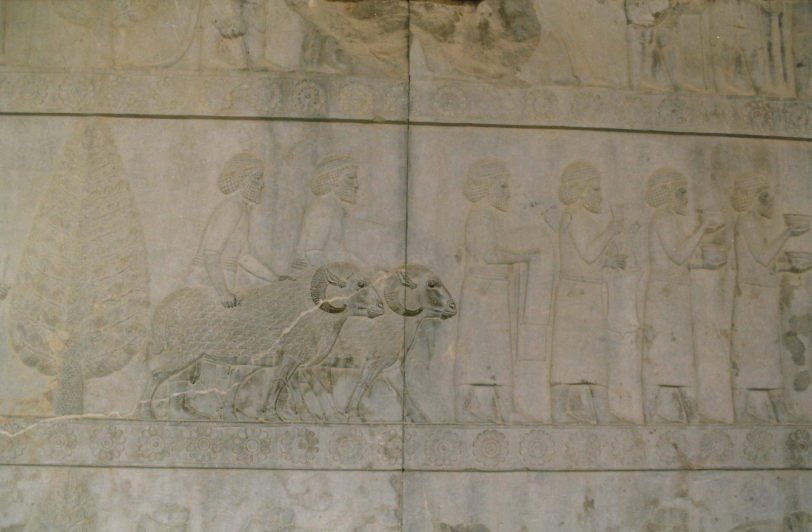
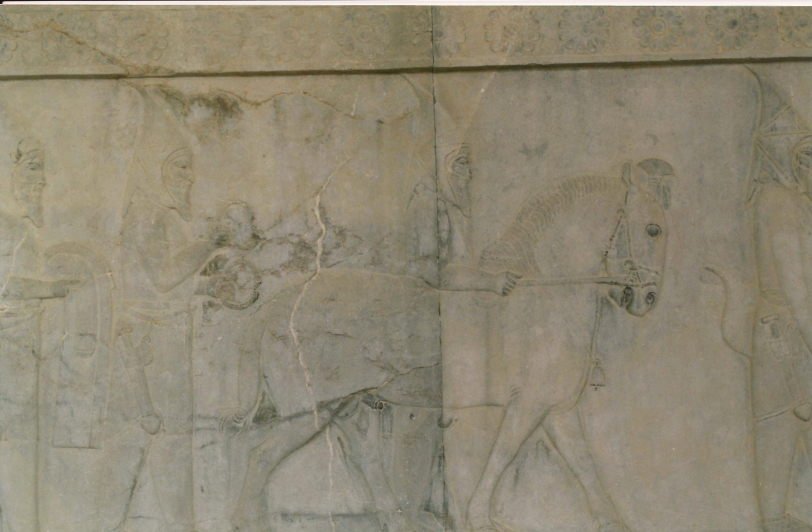
The Throne Hall
Next to the Apadana is the Throne Hall. Its eight stone doorways are decorated with reliefs of throne scenes and scenes depicting the king in combat with monsters.
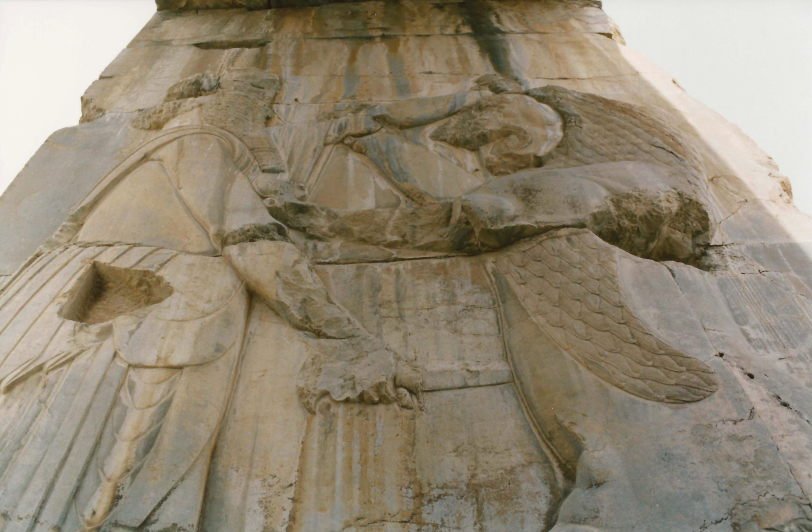
The Treasury
The tremendous wealth stored here came from the conquered nations and from the annual tribute sent by the peoples of the empire to the king on the occasion of the New Year's feast. This was was plundered by Alexander the Great on his conquest.
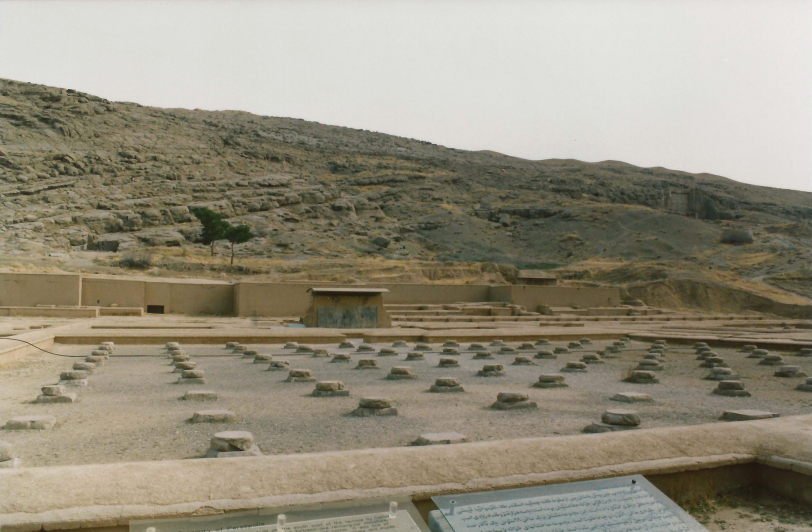
The remains of the Treasury
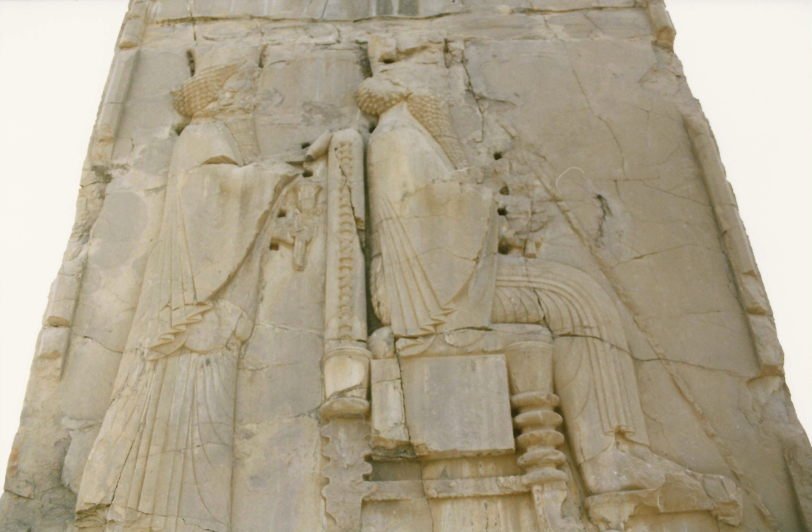
Darius I, seated on his throne, and Crown Prince Xerxes behind.
The Palace of Xerxes
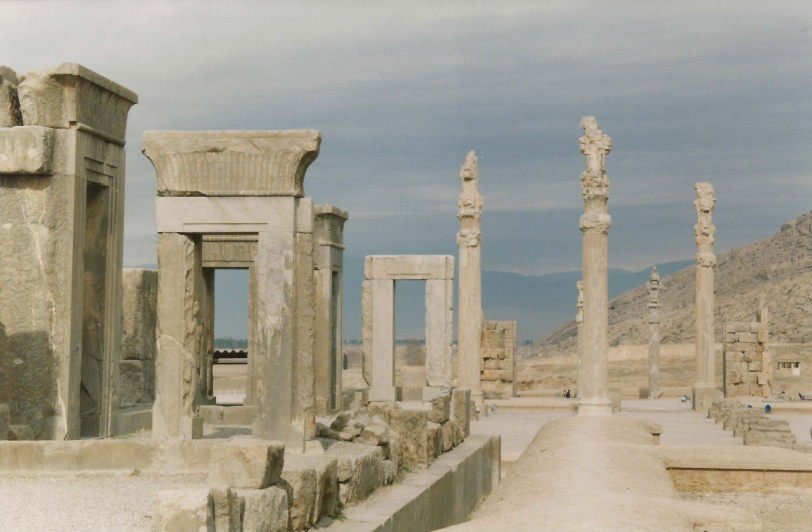
The Gate of Xerxes "The Gate of The Nations"
A pair of colossal bulls guard the entrance where dignitaries and delegations from the Empire would have entered the city.
All visitors had to pass through this, the only entrance to the terrace, on their way to the Throne Hall to pay homage to the king.
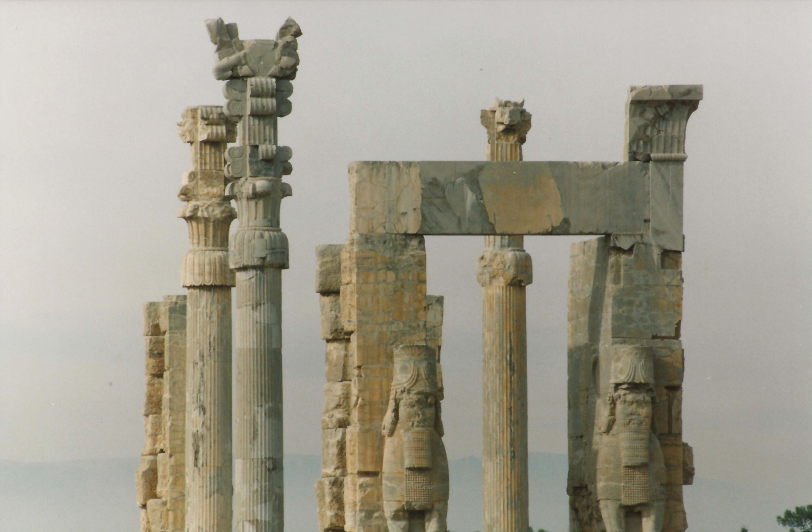
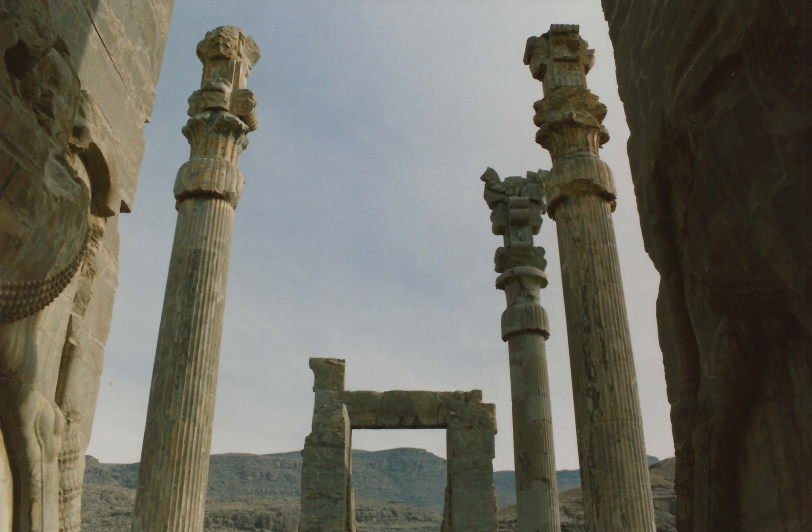
The Harem of Xerxes
The Harem, where the royal ladies lived
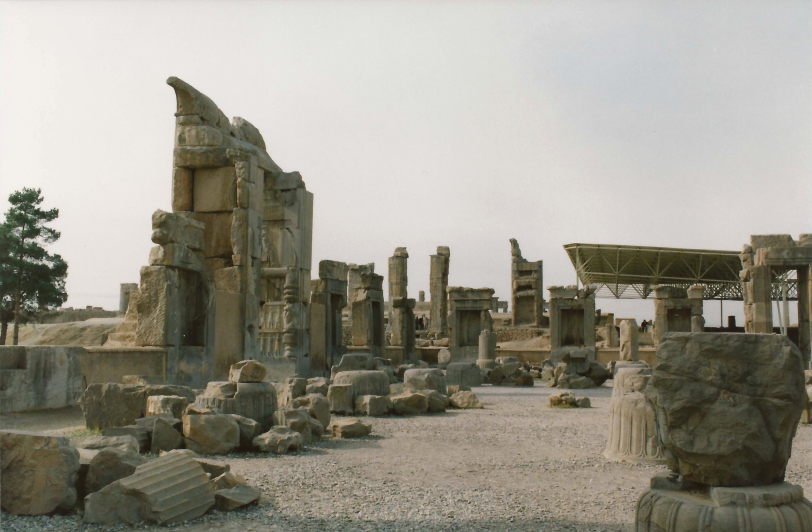
Overlooking Persepolis the tombs of some of the later kings, Artaxerxes II and Artaxerxes III
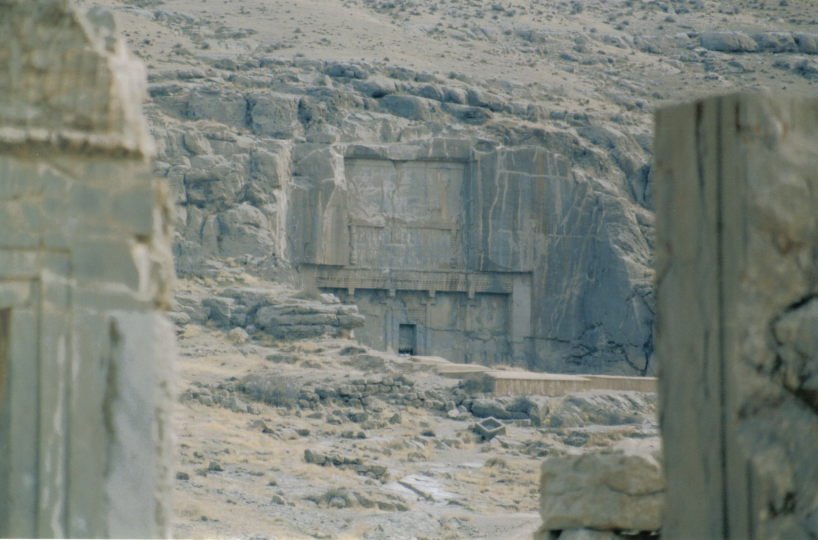
The tomb of Artaxerxes III
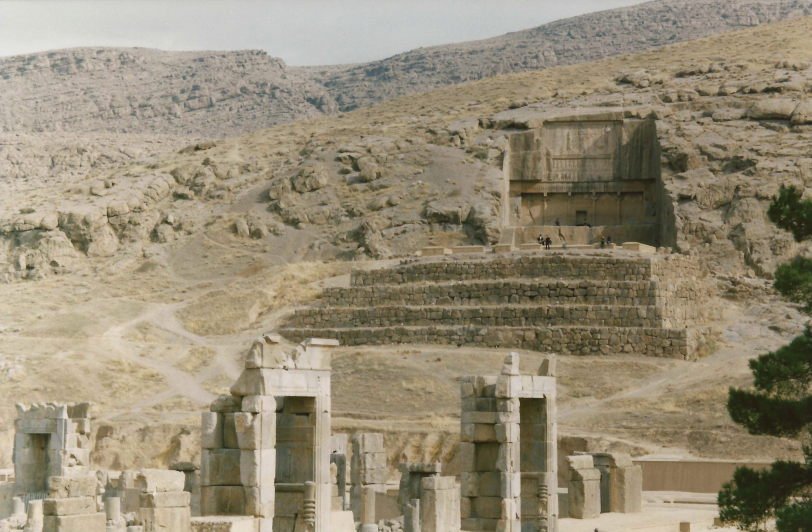
The palace of 100 columns and tomb of Artaxerxes II
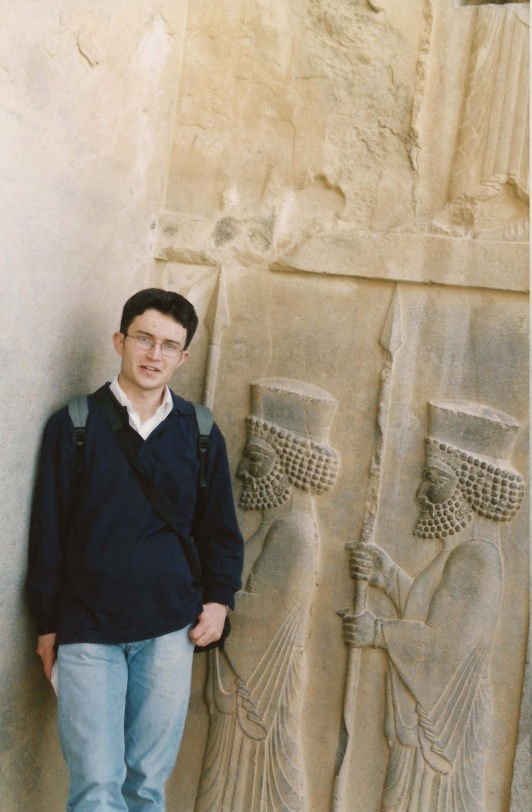
Carvings at the edge of the tomb of Artaxerxes II
The Royal Tombs (Naqsh-i-Rustam)
About 5 kilometres from Persepolis lies the imposing site of Naqsh-i-Rustam in the mountain range of Husain Kuh, where Darius the Great and his successors had their monumental tombs carved into the cliff.
The dramatic facade of the tomb is constructed like a cross.
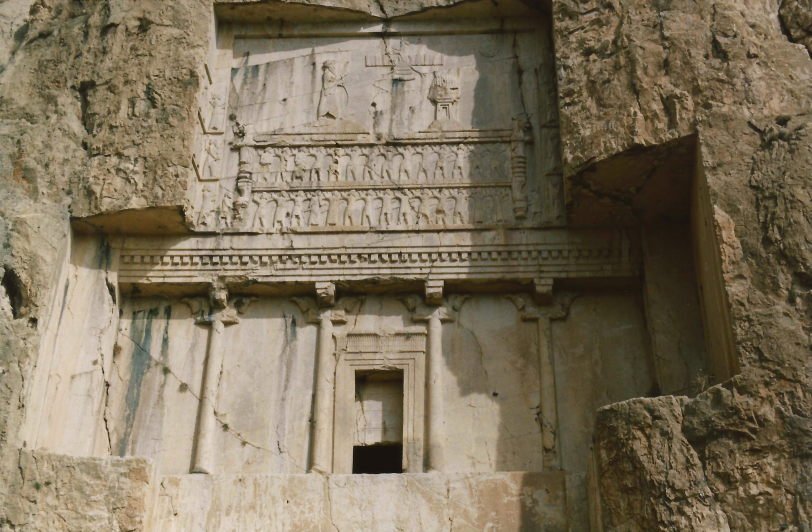
Other tombs here are attributed Darius's successors, Xerxes, Artaxerxes I, and Darius II.
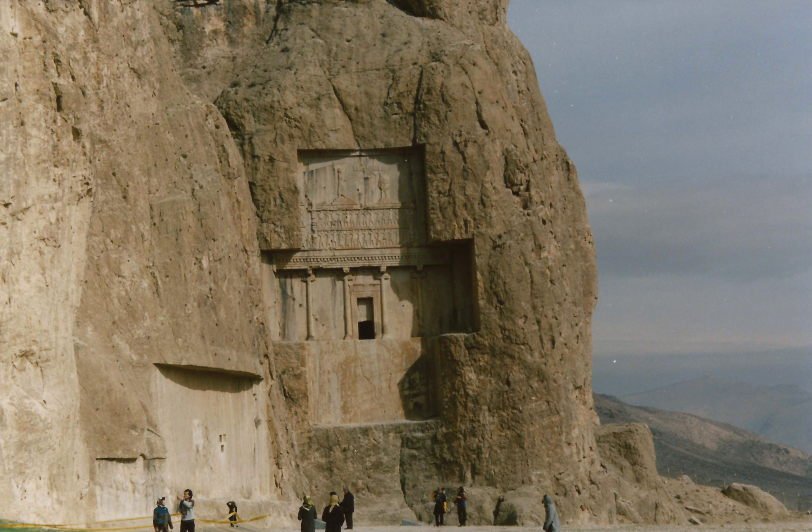
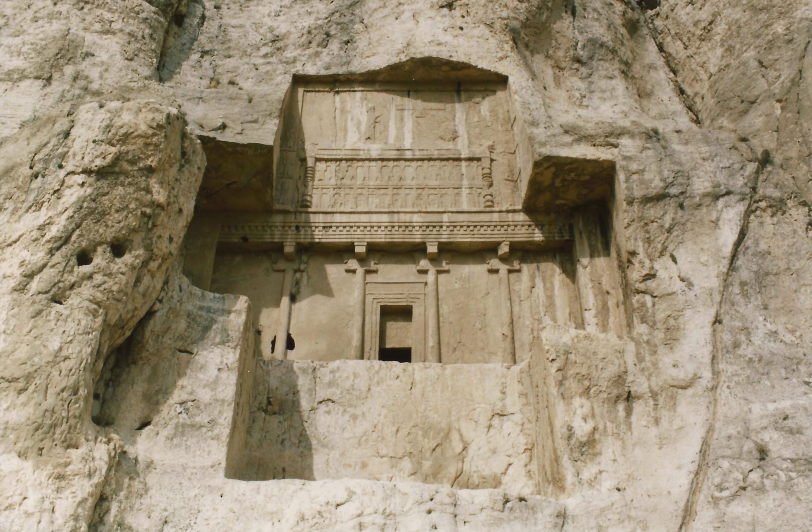
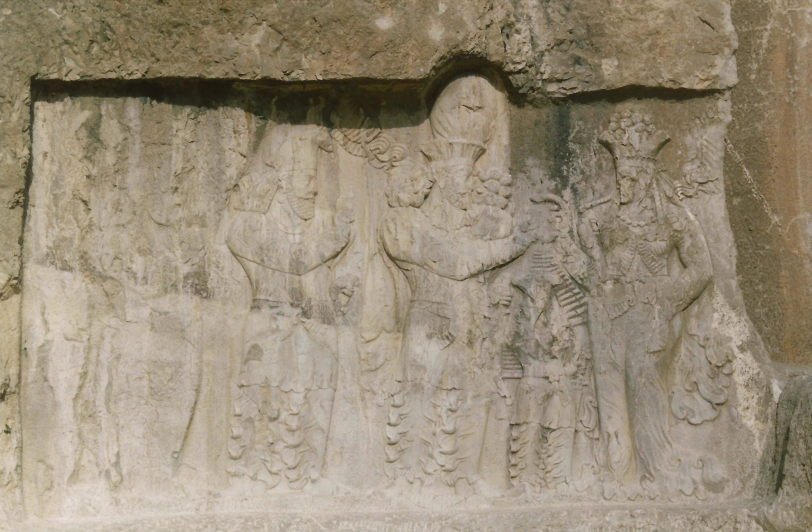
Carvings at Tomb at Naqsh-I-Rustam
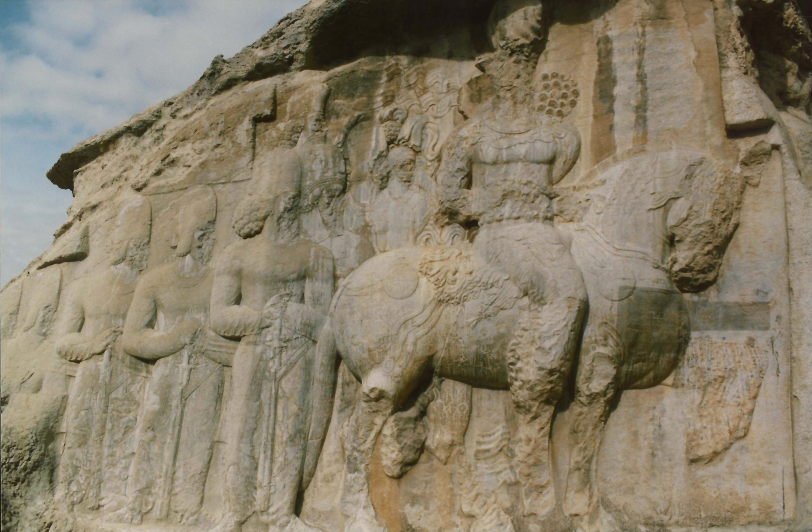
Carvings at Tomb at Naqsh-I-Rajab, Shapur I with his courtiers
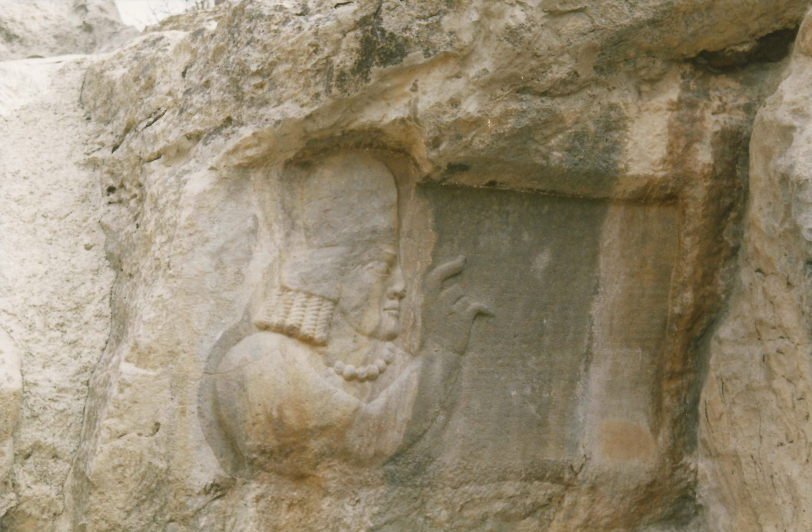
Carvings at Tomb, The great Karthir
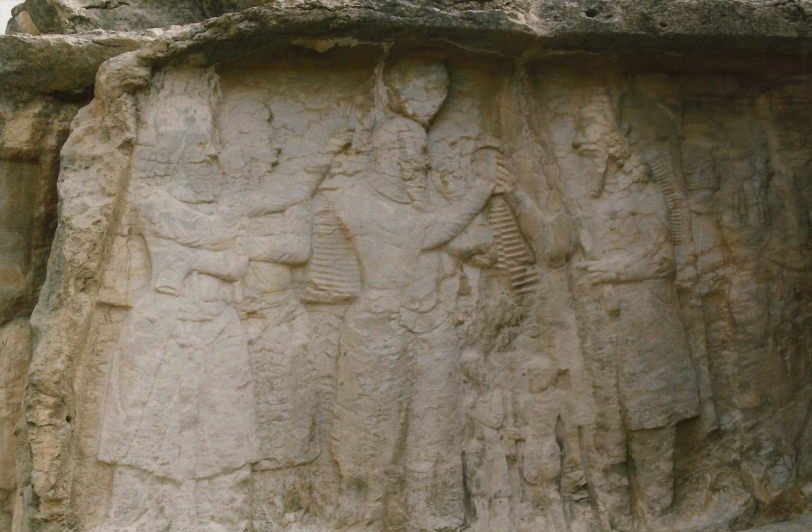
Carvings at Tomb at Naqsh-I-Rajab, Coronation of Ardashir the Unifier

Carvings at Tomb at Naqsh-I-Rajab, Coronation of Shapur I
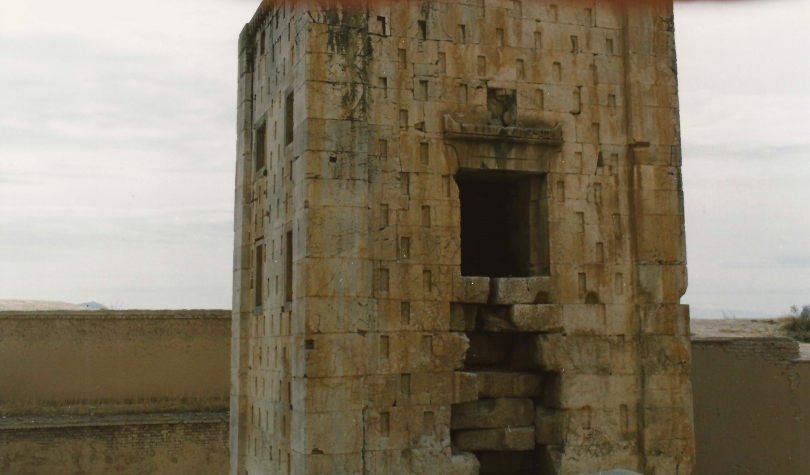
Imposing monument opposite the tomb of Darius, its origin and use have been disputed. It was possibly a fire temple.
Pasagandae
Pasagandae is another World heritage site about a 30 minute drive from Persepolis. This was the capital of the Achaemenid Empire in the time of Cyrus the Great.
There are ruins here but the main site is the Tomb of Cyrus the Great. If you have time here you can walk up the hill, The Throne of the Mother of Solomon, to get a great view of the site.
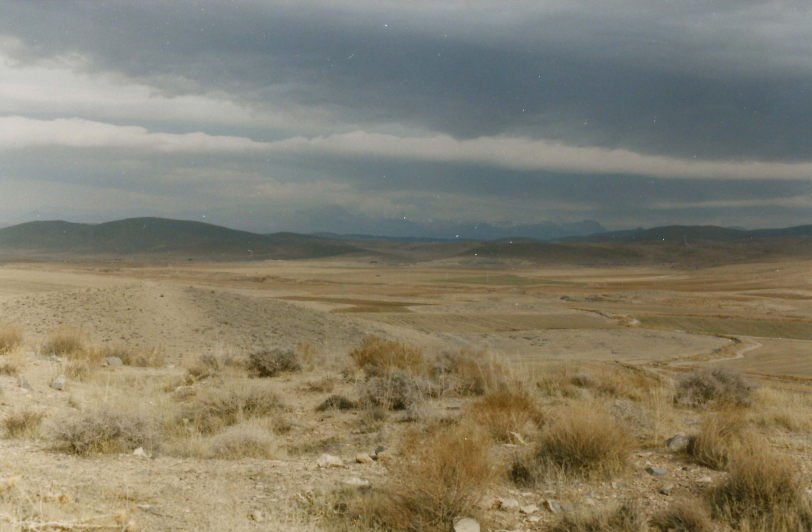
Views of the Throne of the Mother of Solomon Pasargadae
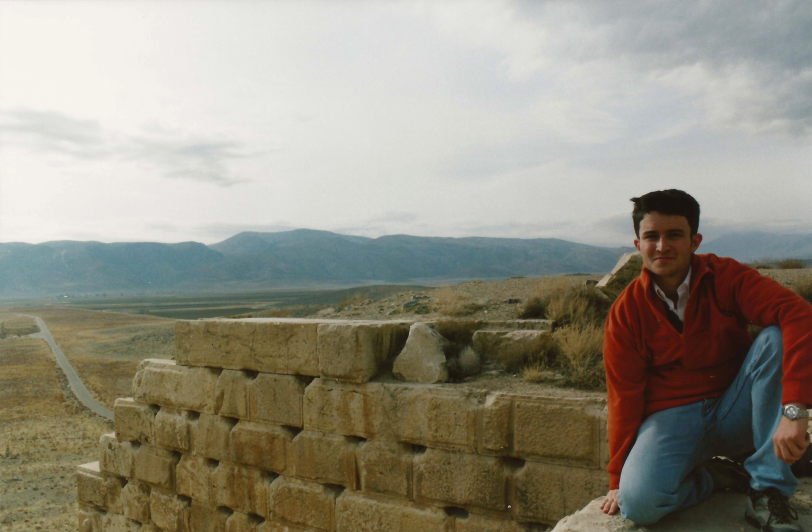
me and my orange fleece :)
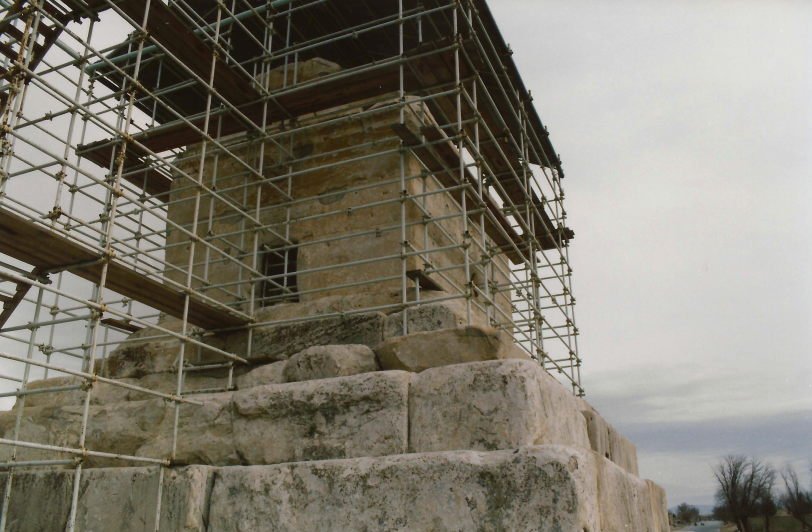
Tomb of Cyrus the Great, unfortunately it was being restored and surrounded by scaffolding when I visited.
It was an amazing day out soaking up the history in this ancient land. You could really feel the history here. My driver did a great job for the day but I now had to head back to Shiraz to get a bus to Yazd for my next stop.
I was only in Iran for a week but there was too much to cover in just one post on Iran. I have split the trip to Iran over several posts. Yet to come are highlights from Yazd and Esfahan.
Thank you for reading this. I write on Steemit about Blockchain, Cryptocurrency, Travel and lots of random topics.
All Images are from my personal library.
Previous Posts in this Series
- Life After Graduation...only begins when you leave the country
- Life After Graduation...The UAE
- Life After Graduation... Experiences in The UAE
- Life After Graduation...Visit to Oman
- Life After Graduation... Dune Bashing in the UAE
- Life After Graduation... Trip to Iran
- Life after graduation...Tour of Shiraz
